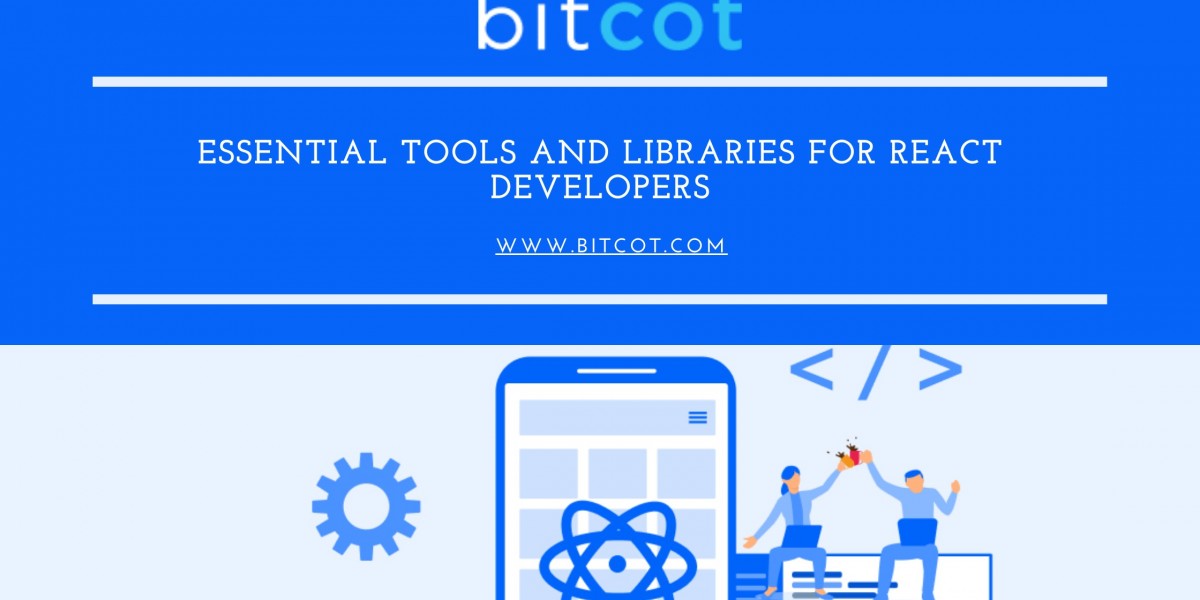React has become one of the most popular libraries for building user interfaces, thanks to its efficiency, flexibility, and robust ecosystem. For React developers, leveraging the right tools and libraries can significantly streamline the development process and enhance the performance of applications. This blog explores some of the essential tools and libraries every React developer should consider incorporating into their workflow.
1. Create a React App
Overview:
Create React App (CRA) is an officially supported tool that sets up a new React project with a modern build setup, saving you from manual configuration.
Key Features:
- Zero configuration setup.
- Supports modern JavaScript features.
- Optimized for performance out of the box.
Usage: To create a new project, run:
```bash
npx create-react-app my-app
cd my-app
npm start
```
2. React Router
Overview:
React Router is a powerful routing library for React that helps you handle client-side navigation.
Key Features:
- Declarative routing.
- Nested routing support.
- Dynamic route matching.
Usage: To add React Router to your project, install it via npm:
```bash
npm install react-router-dom
```
Then, use it to define your app’s routes:
```javascript
import { BrowserRouter as Router, Route, Switch } from 'react-router-dom';
import Home from './Home';
import About from './About';
function App() {
return (
<Router>
<Switch>
<Route path="/about" component={About} />
<Route path="/" component={Home} />
</Switch>
</Router>
);
}
```
3. Redux
Overview:
Redux is a predictable state container for JavaScript apps, making it easier to manage the state of your application.
Key Features:
- Centralized state management.
- Predictable state updates with pure reducers.
- Debugging tools.
Usage: To start with Redux, install the necessary packages:
```bash
npm install redux react-redux
```
Create a store and connect it to your app:
```javascript
import { createStore } from 'redux';
import { Provider } from 'react-redux';
import rootReducer from './reducers';
const store = createStore(rootReducer);
function App() {
return (
<Provider store={store}>
{/* Your components */}
</Provider>
);
}
```
4. Redux Toolkit
Overview:
Redux Toolkit is the official, recommended way to write Redux logic, offering a set of tools that simplify Redux usage.
Key Features:
- Simplified reducers and actions.
- Built-in support for immutability.
- Enhanced development experience.
Usage: Install Redux Toolkit:
```bash
npm install @reduxjs/toolkit
```
Set up a slice:
```javascript
import { createSlice, configureStore } from '@reduxjs/toolkit';
const counterSlice = createSlice({
name: 'counter',
initialState: 0,
reducers: {
increment: state => state + 1,
decrement: state => state - 1,
},
});
const store = configureStore({
reducer: counterSlice.reducer,
});
export const { increment, decrement } = counterSlice.actions;
export default store;
```
5. React Query
Overview:
React Query simplifies data fetching, caching, synchronization, and server state management in React applications.
Key Features:
- Data fetching and caching.
- Synchronization and background updates.
- Out-of-the-box support for query retries.
Usage: Install React Query:
```bash
npm install react-query
```
Use it in your component:
```javascript
import { useQuery } from 'react-query';
function fetchUser() {
return fetch('/api/user').then(res => res.json());
}
function UserComponent() {
const { data, error, isLoading } = useQuery('user', fetchUser);
if (isLoading) return 'Loading...';
if (error) return 'Error loading user data';
return <div>User: {data.name}</div>;
}
```
6. Styled Components
Overview:
Styled Components allows you to write CSS directly within your JavaScript files using tagged template literals.
Key Features:
- Scoped styles.
- Dynamic styling based on props.
- Theme support.
Usage: Install Styled Components:
```bash
npm install styled-components
```
Create a styled component:
```javascript
import styled from 'styled-components';
const Button = styled.button`
background: ${props => props.primary ? 'blue' : 'gray'};
color: white;
padding: 10px;
border: none;
border-radius: 5px;
`;
function App() {
return <Button primary>Click Me</Button>;
}
```
7. ESLint and Prettier
Overview:
ESLint is a tool for identifying and fixing linting issues, while Prettier is an opinionated code formatter. Together, they ensure consistent code quality and style.
Key Features:
- Automated code formatting.
- Customizable linting rules.
- Integration with most code editors.
Usage: Install ESLint and Prettier:
```bash
npm install eslint prettier eslint-plugin-prettier eslint-config-prettier
```
Create a configuration file `.eslintrc.js`:
```javascript
module.exports = {
extends: ['eslint:recommended', 'plugin:react/recommended', 'prettier'],
plugins: ['prettier'],
rules: {
'prettier/prettier': 'error',
},
};
```
Conclusion
Incorporating these essential tools and libraries into your React development workflow can significantly enhance productivity, code quality, and application performance. From setting up a new project with Create React App to managing complex state with Redux and ensuring consistent styling with Styled Components, each tool brings unique benefits that streamline the development process. As React continues to evolve, staying updated with the latest tools and best practices is key to building robust, scalable, and maintainable applications.
Also Read: React vs Angular: Which Framework is Best for Your Front-end Project?








